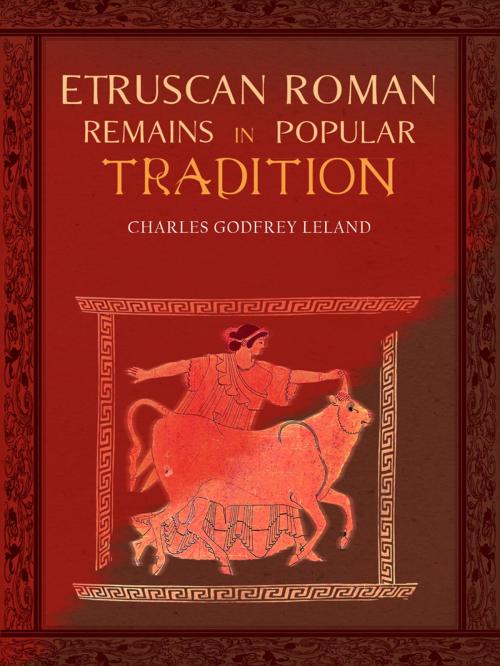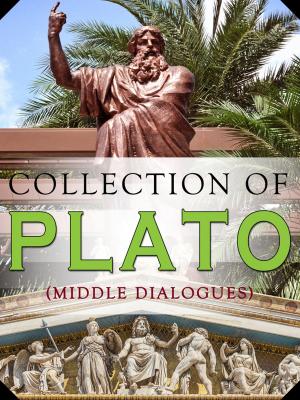Etruscan Roman Remains in Popular Tradition
Nonfiction, History, Italy, Fiction & Literature, Classics| Author: | Charles Godfrey Leland | ISBN: | 9781623942106 |
| Publisher: | AppsPublisher | Publication: | April 7, 2013 |
| Imprint: | Language: | English |
| Author: | Charles Godfrey Leland |
| ISBN: | 9781623942106 |
| Publisher: | AppsPublisher |
| Publication: | April 7, 2013 |
| Imprint: | |
| Language: | English |
This book is a classic study of the folklore of the Tuscan region of Italy (to the northwest of Rome, around Florence). It ties these traditions to ancient Etruscan and Roman pagan practices. The central focus is the ideology and practice of Stregheria, Italian traditional witchcraft.
This is essentially an ethnography of what neopagans term a 'family tradition': that is, practical magic--but with an Italian flavor. We meet the Goddess of Truffles, learn the details of divining by oil, fire and molten lead; how to bring back the dead, and coerce nature spirits into performing favors. Leland carefully documents his field notes, and includes the full text of numerous spells and songs in Italian, particularly the Tuscan dialect. The text includes many fairy-tales of the sort that are not suitable for children. Leland draws on often obscure sources which tie his data into classical and pre-classical pagan traditions, particularly the little-known Etruscan religion.
But--as the saying goes--wait, there's more. Leland takes numerous witty, but somewhat bipolar, tangents. He is both a rationalist and a romantic; one moment he is off on an anti-clerical rant, the next he is revealing that he was initiated into witchcraft at an early age by a Pennsylvania Dutch nanny. He patronizes his informants with a wink and a nudge to the reader; then rhapsodizes over the innate spiritual qualities of the natural world in language that would make a neo-druid blush.
In short, Leland was obviously not the detached observer which modern social science demands. This has not helped acceptance of his books by academics, and even some neopagans are deeply suspicious of his work. However, he makes it clear that he isn't writing for a rigorous academic audience, but for posterity. As a progressive Victorian, Leland believed that modernism would soon overwhelm and extinguish these traditions. The antiquarian in him worked to bring them to light.
Although difficult reading at points, this book will reward anyone seeking details about the actual practice of a folk magic, which despite Lelands' prediction of its impending demise, persists to this day.
This book is a classic study of the folklore of the Tuscan region of Italy (to the northwest of Rome, around Florence). It ties these traditions to ancient Etruscan and Roman pagan practices. The central focus is the ideology and practice of Stregheria, Italian traditional witchcraft.
This is essentially an ethnography of what neopagans term a 'family tradition': that is, practical magic--but with an Italian flavor. We meet the Goddess of Truffles, learn the details of divining by oil, fire and molten lead; how to bring back the dead, and coerce nature spirits into performing favors. Leland carefully documents his field notes, and includes the full text of numerous spells and songs in Italian, particularly the Tuscan dialect. The text includes many fairy-tales of the sort that are not suitable for children. Leland draws on often obscure sources which tie his data into classical and pre-classical pagan traditions, particularly the little-known Etruscan religion.
But--as the saying goes--wait, there's more. Leland takes numerous witty, but somewhat bipolar, tangents. He is both a rationalist and a romantic; one moment he is off on an anti-clerical rant, the next he is revealing that he was initiated into witchcraft at an early age by a Pennsylvania Dutch nanny. He patronizes his informants with a wink and a nudge to the reader; then rhapsodizes over the innate spiritual qualities of the natural world in language that would make a neo-druid blush.
In short, Leland was obviously not the detached observer which modern social science demands. This has not helped acceptance of his books by academics, and even some neopagans are deeply suspicious of his work. However, he makes it clear that he isn't writing for a rigorous academic audience, but for posterity. As a progressive Victorian, Leland believed that modernism would soon overwhelm and extinguish these traditions. The antiquarian in him worked to bring them to light.
Although difficult reading at points, this book will reward anyone seeking details about the actual practice of a folk magic, which despite Lelands' prediction of its impending demise, persists to this day.















